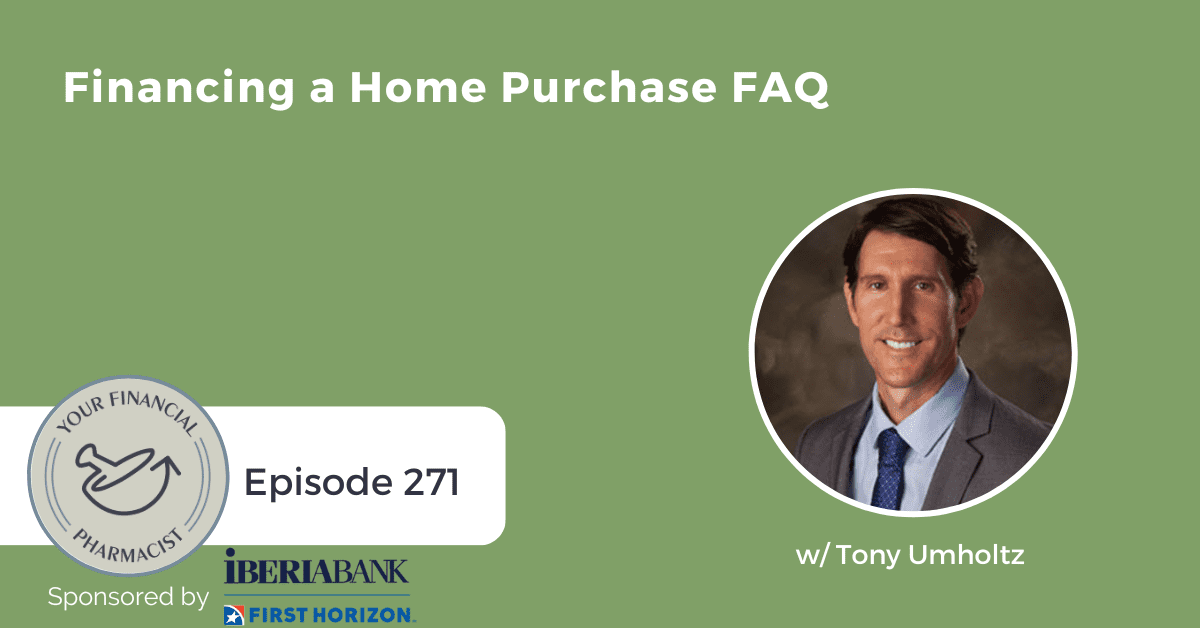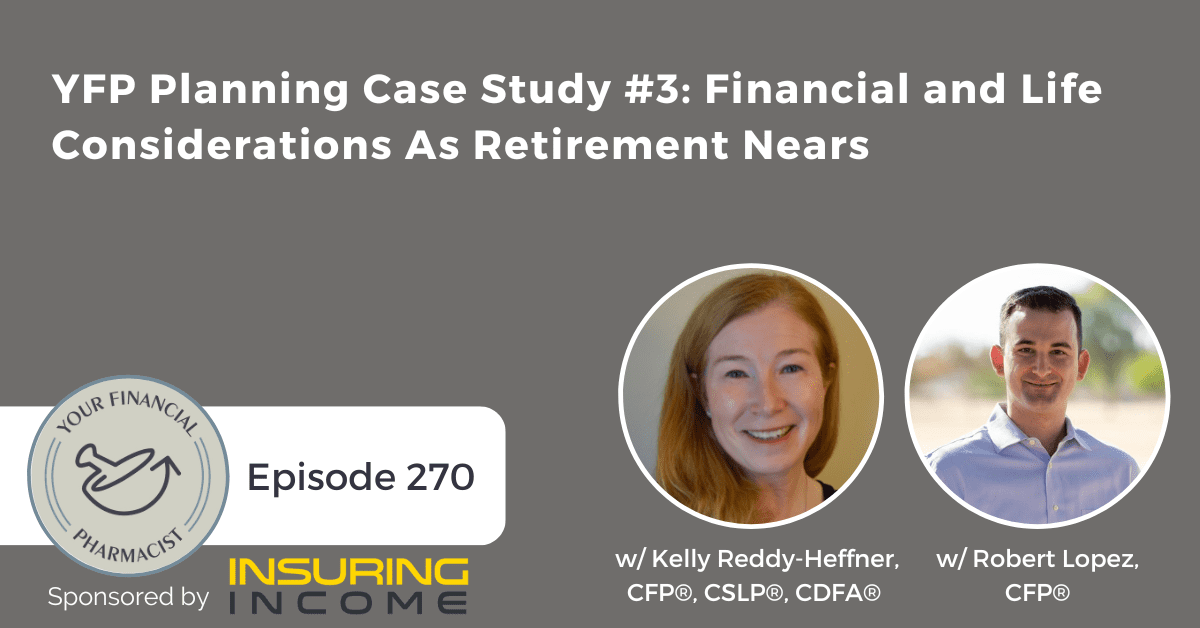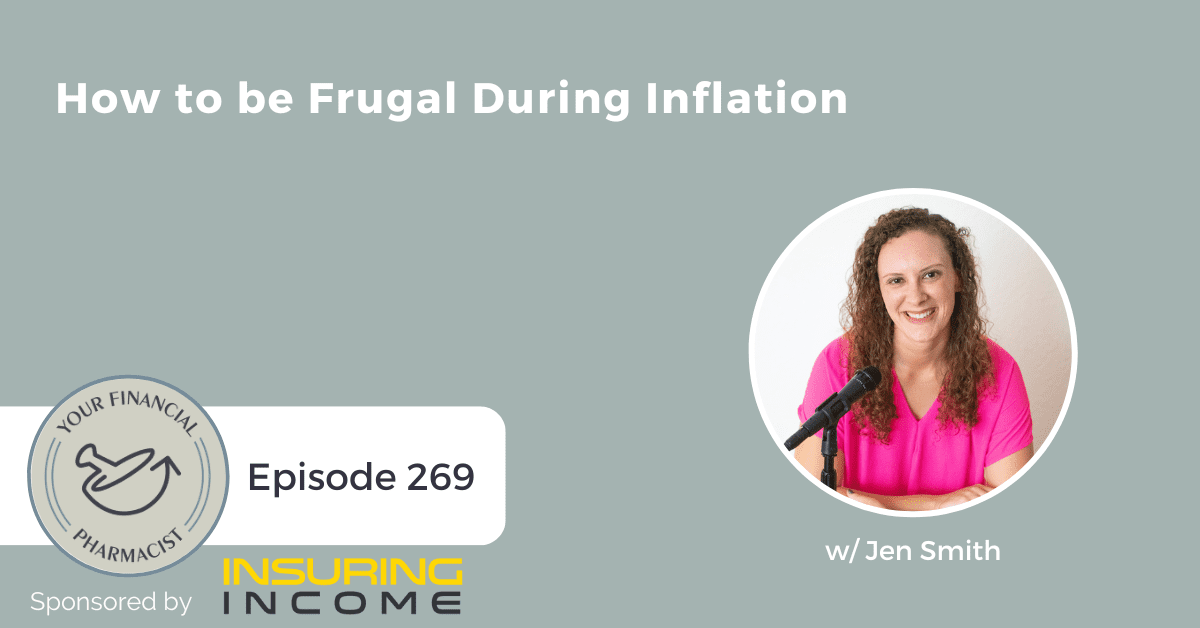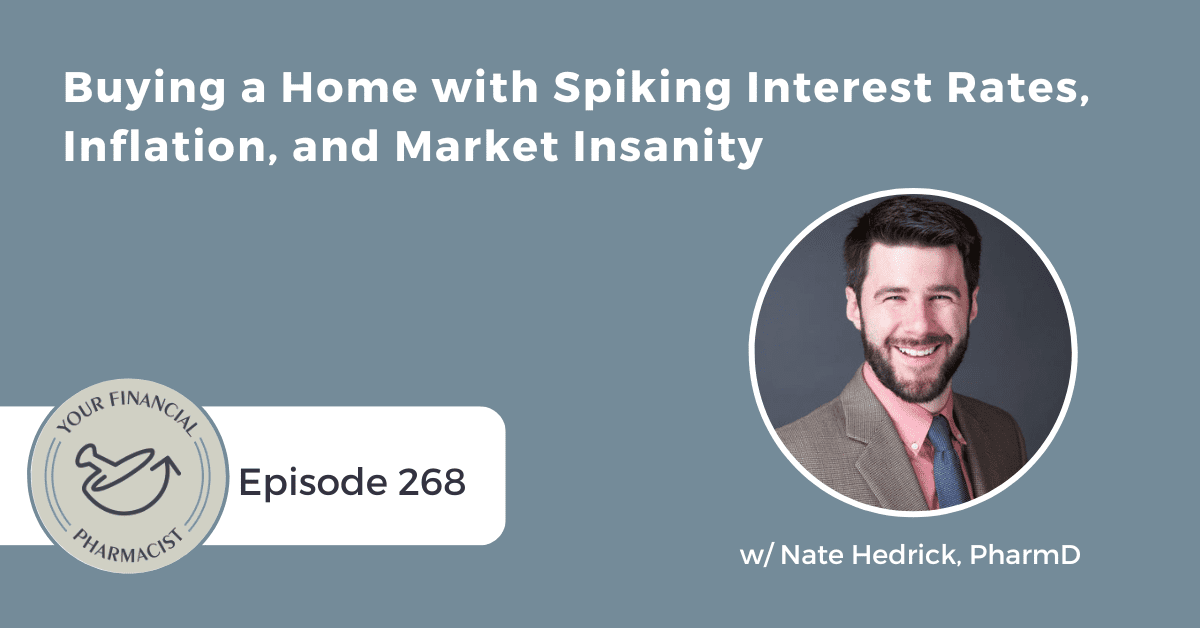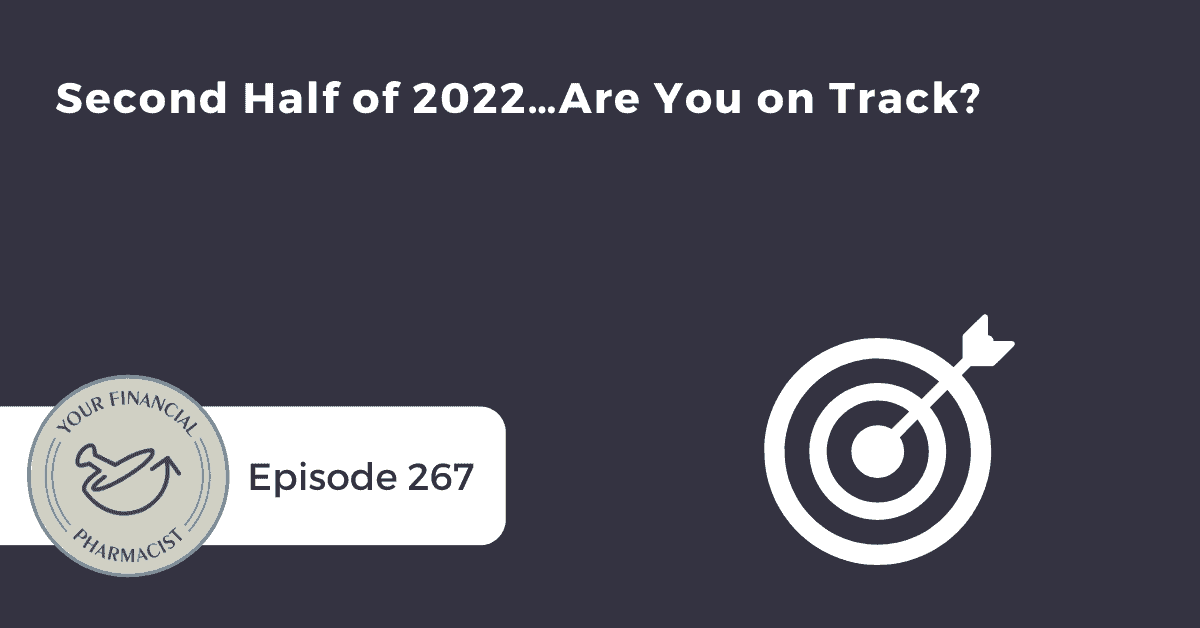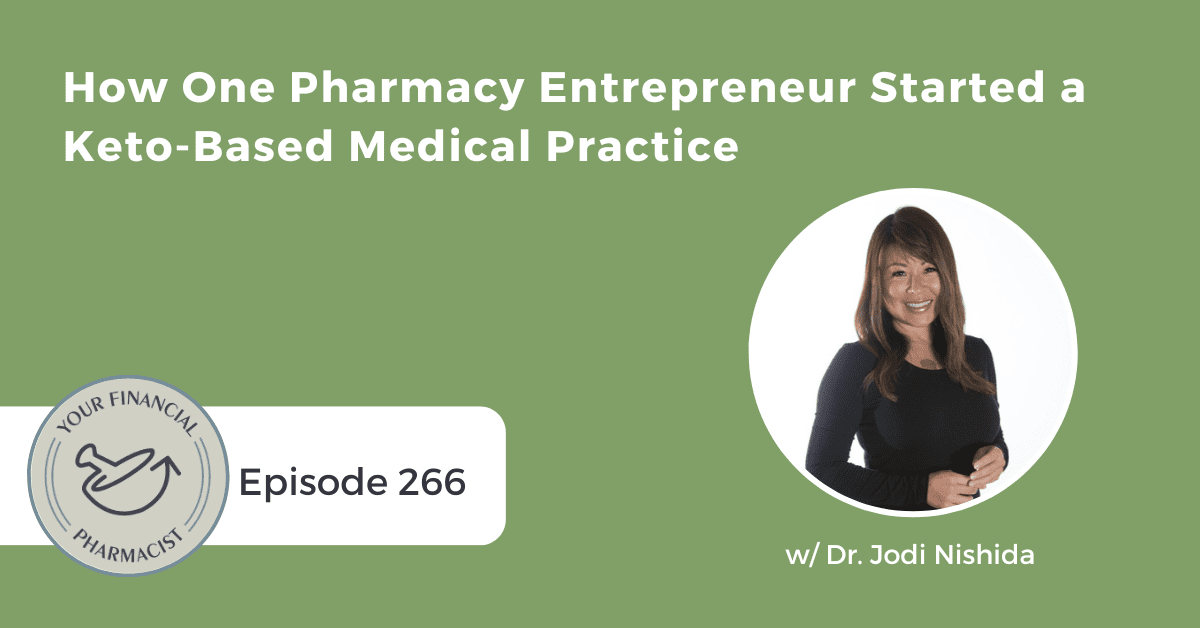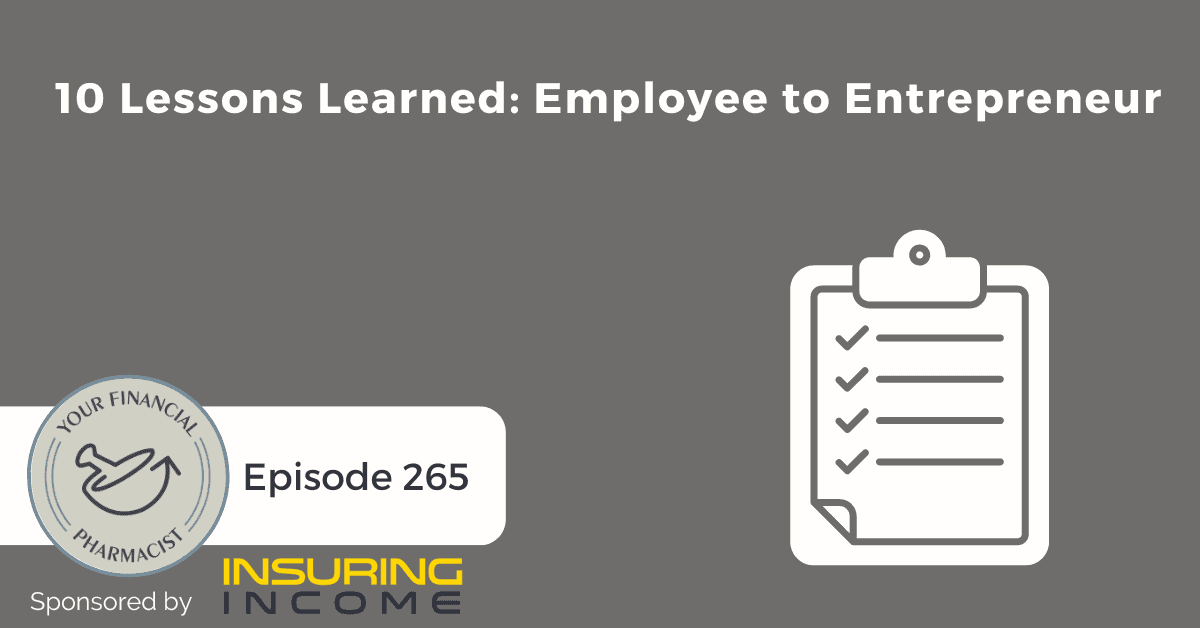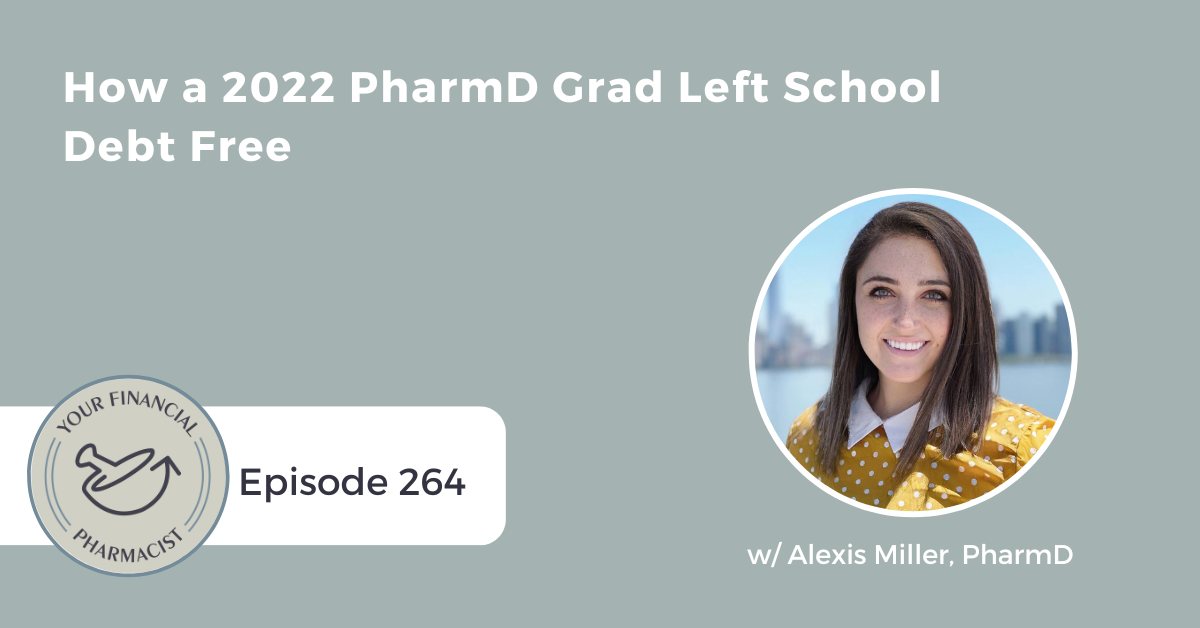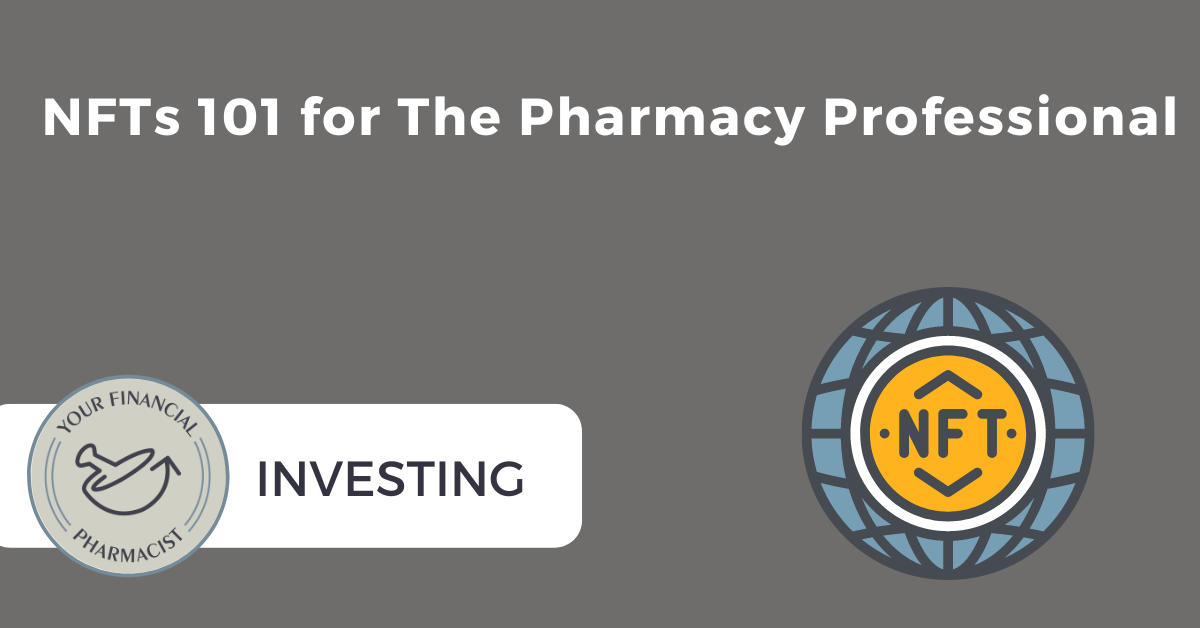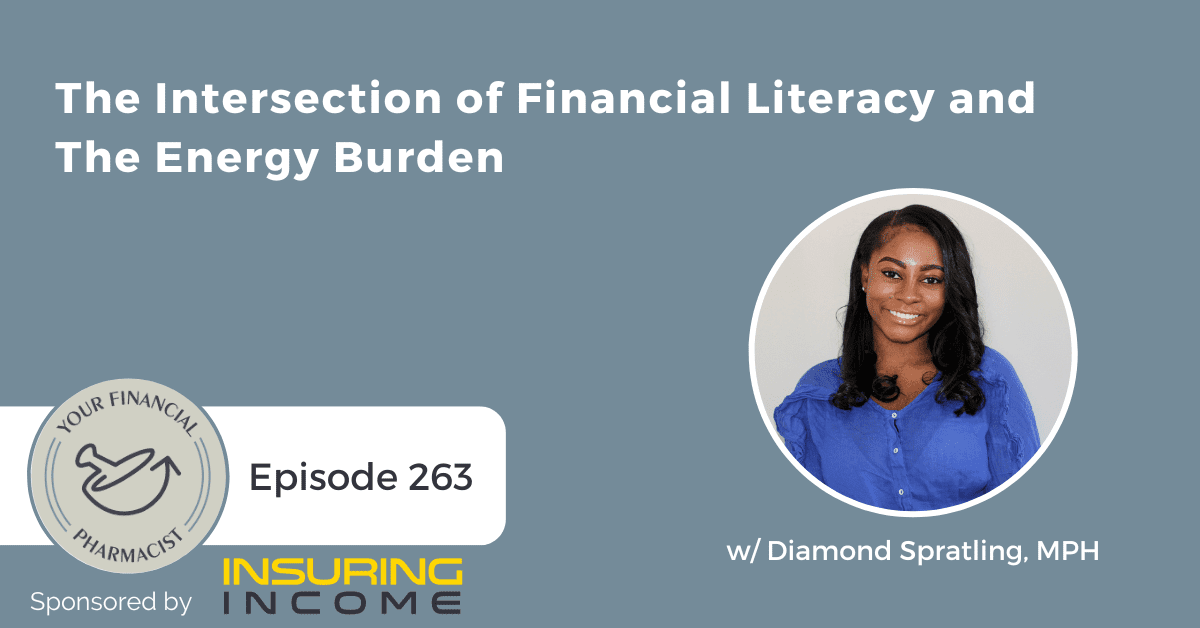Financing a Home Purchase FAQ
On this episode sponsored by First Horizon, Tony Umholtz takes questions from the YFP Facebook Group related to financing a home purchase including how much down payment is required with a doctor type loan, what to look for when choosing a lender, and ways to reduce the interest rate in a loan.
About Today’s Guest
Tony Umholtz graduated Cum Laude from the University of South Florida with a B.S. in Finance from the Muma College of Business. He then went on to complete his MBA. While at USF, Tony was part of the inaugural football team in 1997. He earned both Academic and AP All-American Honors during his collegiate career. After college, Tony had the opportunity to sign contracts with several NFL teams including the Tennessee Titans, New York Giants, and the New England Patriots. Being active in the community is also important to Tony. He has served or serves as a board member for several charitable and non-profit organizations including board member for the Salvation Army, FCA Tampa Bay, and the USF National Alumni Association. Having orchestrated over $1.1 billion in lending volume during his career, Tony has consistently been ranked as one of the top mortgage loan officers in the industry by the Scotsman’s Guide, Mortgage Executive magazine, and Mortgage Originator magazine.
Episode Summary
This week, YFP Co-Founder & CEO, Tim Ulbrich, PharmD, welcomes Tony Umholtz, a mortgage manager for First Horizon, back to the show. During the show, Tony answers common questions about financing a home purchase. Tim shares questions he and Tony often hear, plus questions from the YFP Facebook Group community. Through their discussion, Tony tackles the question of incentives, if any, that are available to first-time home buyers, the amount home buyers should expect to put down with a doctor-type loan, and differentiates between doctor loans and loans pharmacists are eligible to take out. Tony touches on home purchase financing for those that are not first-time home buyers, how pharmacist home loan products might be used to house hack, and limits on the various loan types for pharmacists. When asked about what to look for in a lender, Tony shares that his primary factor to look for with a lender is communication, but it’s also critical to make sure that the lender offers a product that meets your needs. We close with insight on lender types, the competitiveness of the doctor-type loan, ways to get lower rates, how student loans are factored into the debt-to-income ratio, and some forecasting on the home financing landscape if we move into a recession.
Links Mentioned in Today’s Episode
- Learn More About First Horizon’s Pharmacist Home Loan and Start the Pre-Approval Process
- Join the Your Financial Pharmacist Facebook Group
- YFP Planning: Financial Planning for Pharmacists
- Schedule a free Discovery Call with YFP Planning
- 5 Steps to Get a Home Loan
- S&P/Case-Shiller U.S. National Home Price Index
- Your Financial Pharmacist Disclaimer and Disclosures
Episode Transcript
[INTRODUCTION]
[00:00:00] TU: Hey, everybody. Tim Ulbrich here, and thank you for listening to the YFP Podcast, where each week we strive to inspire and encourage you on your path towards achieving financial freedom.
This week, I had a chance to welcome back onto the show, Tony Umholtz, a mortgage manager for First Horizon, formerly IBERIABANK. During the show, Tony takes the hot seat as I asked him questions posed from the YFP Facebook group related to financing a home purchase. Questions we cover include how much down payment is required with a doctor type loan, what to look for when choosing a lender, and ways to reduce the interest rate on a loan.
Before we hear from today’s sponsor and then jump into the show, I recognize that many listeners may not be aware of what the team at YFP Planning does in working one-on-one with more than 250 households in 40-plus states. YFP Planning offers fee-only high-touch financial planning that is customized to the pharmacy professional. If you’re interested in learning more about how working one-on-one with a certified financial planner may help you achieve your financial goals, you can book a free discovery call at yfplanning.com.
Whether or not YFP Planning’s financial planning services are a good fit for you, know that we appreciate your support of this podcast and our mission to help pharmacists achieve financial freedom. Okay, let’s hear from today’s sponsor, and then we’ll jump into my interview with Tony Umholtz.
Does saving 20% for a down payment on a home feel like an uphill battle? It’s no secret that pharmacists have a lot of competing financial priorities, including high student loan debt, meaning that saving 20% for a down payment on a home may take years. We’ve been on the hunt for a solution for pharmacists that are ready to purchase a home with a lower down payment and are happy to have found that option with First Horizon, previously IBERIABANK/First Horizon.
First Horizon offers a professional home loan option, aka a doctor or pharmacist home loan, that requires a 3% down payment for a single family home or townhome, has no PMI and offers a 30-year fixed rate mortgage on home loans up to $647,200. The pharmacist home loan is available in all states, except Alaska and Hawaii, and can be used to purchase condos as well. However, rates may be higher, and a condo review has to be completed.
To check out the requirements for First Horizon’s pharmacist home loan and to start the pre-approval process, visit yourfinancialpharmacist.com/homeloan. Again, that’s yourfinancialpharmacist.com/homeloan.
[INTERVIEW]
[00:02:25] TU: Tony, welcome to the show.
[00:02:27] TONY UMHOLTZ: Tim, it’s good to see you. Happy to be here.
[00:02:30] TU: Excited to have you back, and I always appreciate your expertise and what you have to share with our community. This is an exciting episode, as we’re doing a commonly asked questions about financing of a home purchase, and we’ve got a handful of questions that have come in from the YFP Facebook group. We’ve got some others that we, either you or I, often get asked as well. So we’ll sprinkle those in throughout the episode.
I suspect most of our listeners now know who you are. You’ve been on the podcast several times, but I don’t want to assume that. So give our listeners some quick background on who is Tony and the work that you do at First Horizon.
[00:03:06] TONY UMHOLTZ: Well, thanks, Tim. Yeah. Scary to say it now, but I’ve been in the mortgage business 20 years, and I’ve been with First Horizon now. But it’s been almost five years, and I’m a residential mortgage lender. So I run a team. We’re able to lend nationally, and we focus on residential mortgage loans and specifically helping folks in the medical community and pharmacists. So it’s been a big, fun business, helping people get to the point of homeownership. The relationships we’ve built over the years has been very gratifying. So that’s what we do, a little bit about us.
[00:03:41] TU: Yeah. It’s been exciting to see the fruit of this collaboration. Actually, I haven’t even shared with you. I had someone reach out to me this week, and a colleague of theirs at the medical center had worked with First Horizon on a loan as a part of a move in a job transition, and she had some questions for me about what they were doing personally. So really cool to hear other pharmacists and colleagues talking and helping one another out, as they’re trying to navigate this decision.
We’ll talk here in a little bit specifically about the pharmacist home loan product that First Horizon offers, but let’s get started. We’re going to put you in the hot seat with questions that have come in from the YFP Facebook group about lending and securing a loan as a part of the home buying process.
So first question comes from Randy, Tony, which is what incentives, if any, are available to first time homebuyers? I thought this is a cool question. I bought my first home back in 2009. At the time, you can correct me on exactly what the dollars were and the program, but there was something like an $8,000 first-time homebuyer credit. I know that has changed. So what incentives, if any, are around for first time homebuyers?
[00:04:47] TONY UMHOLTZ: Well, there are several different options for first time homebuyers, but I’ll kind of get into high level. Then we can get into some more of the detail options that are out there. So for example, some of our programs will allow first-time homebuyers put down as low as 3% down. If you’ve owned a home before, you cannot do that, so you have to have been a first-time homebuyer. So it’s limited down payment options. Also, for non-pharmacists, for people who aren’t in that field, there are some limited PMI loans, too, if you’re a first-time homebuyer that you cannot get if you’ve owned before.
Now, there are certain programs that are available for folks that earn under the median income for the county. Now, this can change for lots of different parts of the country. So it’s very different in different states, different municipalities, different counties. But there’s grant programs that are out there, where you can actually get money towards the purchase of your home. The one thing that you have to look out for with this product or those programs is normally you have to earn under the median income for the county. So that’s a challenging thing sometimes to qualify for. This actually can be harder to qualify for that grant than it is to qualify for the mortgage.
The other thing to look out for too is a lot of times these grant programs are set up as like a forgivable loan, if you live five years or more. But those are certainly out there, and I encourage people to look for them if they think they qualify. But it can be a little tough to qualify for them, based upon that income qualification.
[00:06:24] TU: So many pharmacists probably won’t meet that median household income requirement. Certainly, we’re looking forward, but I think that’s a good segue to the other options that you’re referring to of potentially lower percent down for first-time homebuyers, which is the question we have that I think Matt is alluding to, which is how much should we expect to have to put down on a primary home with a doctor loan, if we can find a bank that will allow a pharmacist to qualify?
So important words we need to differentiate here would be the doctor loans and those that pharmacists are eligible for, which is not all of them, even though pharmacists are doctors. They worked hard to get that degree. So talk to us about the doctor loan umbrella, and then we can talk more specifically about the pharmacist home loan product that First Horizon has.
[00:07:10] TONY UMHOLTZ: Sure. So there is an MD, Do product out there that’s designated for that segment of professionals. Then, of course, there’s the pharmacist product that we offer. A lot – There is doctor loans that different banks have, and most banks do not include pharmacists in that MD program. They typically focus just on MDs and VOs. We do have that product too, and we have had a lot of success with that in that community.
But the pharmacist product is very similar. It has no PMI. Really, the only major difference is the loan size. It won’t go as high. So currently, our loan has a cap of about 650 for the maximum loan amount versus the MD product will go higher. But it’s got the same elements, similar rates, and, of course, the No MI is a nice – It’s the biggest benefit of it. To answer that question, definitely there’s two different types of programs out there. There are some for dentists, veterinarians that differ a little bit from this program that we’re discussing for pharmacists.
[00:08:19] TU: Yeah. That was one of the reasons we were excited to begin this collaboration a few years ago was to have an offering that reached most 48 states across the country for pharmacists. Obviously, the maximum loan amount, I think, for many pharmacists is within range. Certainly, folks that might be in higher cost of living areas, think about the Northeast, out west, might rub up against some of the limitation there.
But just to reiterate what you said, 3% down first-time homebuyers, no PMI, maximum loan amount around 650. Other thing that’s noteworthy here is minimum credit score is around 700. Is that correct, Tony?
[00:08:55] TONY UMHOLTZ: That is, Tim. Good job. 700.
[00:08:58] TU: So my next follow-up question here is what if someone is not a first-time homebuyer? So I’m thinking of the pharmacists listening that maybe have been in a home or two are still looking at taking advantage of a product where they might not have to give up so much cash or use some of the equity they’ve already built from their previous home. Is there an option still available, even if it’s not a first-time homebuyer?
[00:09:17] TONY UMHOLTZ: Definitely, yeah. Really, just the down payment just bumps up to 5% down. So you’re just going up slightly, with a little higher down payment up to 5%, still No MI, all the same elements of same programs, just a little bit more down.
[00:09:32] TU: Okay. One of the common questions I get is is there – We’re not going to talk specific rates because you and I know this change by the hour, by the day. Each time we record these, obviously, we’re seeing significant fluctuations over rate. But a common question I get is, is this product or doctor loans at large, are they competitive with conventional rates? So obviously, I’m having an advantage here that I’m not having to put maybe a traditional 20 percent down, especially if I’m trying to use that cash for other financial goals. But am I potentially giving up rate on a product like this? How do you typically answer that question?
[00:10:09] TONY UMHOLTZ: Well, you’re really not, especially on the 95% product. I’ve found that that program actually carries better rates than if I had like a non-pharmacist client that put 20% down. So you actually can feel good and confident that you’re going to be getting probably a better rate than most, even folks that are putting more down than you.
The 3% down product sometimes can be about the same as the [inaudible 00:10:37]. The 5% sometimes is a little lower rate, maybe an eighth to a quarter, depending on the day in the market. But it’s very competitive. I mean, I’ve compared it to 20% down, and some days it’s an eighth or a quarter better rate to do that program versus another client getting the 20% down. So I’ve been very happy with that.
[00:11:02] TU: That’s good information too, knowing the 5% down might be a little bit different than 3%. So as folks connect with you or learn more about the product, evaluating that in the moment doesn’t make sense to put an extra 2% down or not, and they can obviously run the math on that as well.
So is this just single-family homes? I’m thinking about folks that are maybe looking at multifamily house hacking type of scenario. So are these products limited to single-family homes?
[00:11:29] TONY UMHOLTZ: No, no. It’s available for condos, townhomes. Now, multifamily, two-unit properties, for example, that’s going to require more down. So the LTV does change if you do a two-unit, and the product will not do anything more than two units. So a triplex and quadruplex would not be available under this program. You’d have to do a normal conventional loan or an FHA loan if you’re going to live in the home property. But two units would require 15% down, but you have No MI. So that’s still nice because MI is much higher on a multifamily versus a single-family. So it’s a pretty solid opportunity if you were able to find a duplex.
Then I will mention, just because I have had numerous clients who have acquired triplex and four-unit, if you live in one of the units, it can be a great long-term investment. I do make this joke, though, because I was looking at one when I was usually dating my wife, and you probably can’t be married and move into a three or fourplex. I’m just generalizing, but I remember when I did it when I was much younger or looking at that time. But it can be a great investment because you live in one unit. You have three renters or two renters paying your rent building equity. I’ve seen tons of success with that.
It is hard to find them because they’re limited due to primarily zoning in most cities. But FHA is great because they expand the loan levels. You can put 3.5% down in some cities. I mean, I’ve written $700,000 fourplex loans with 3.5% down. So it’s pretty cool.
[00:13:10] TU: Under the pharmacist home loan product, there’s an option for two units, but it’s going to require higher down payment, still benefiting on the No PMI. But then if it’s more than two units, no good under the pharmacist home loan product.
[00:13:23] TONY UMHOLTZ: That’s right. Yup.
[00:13:24] TU: Probably looking at FHA or other type of loan. Gotcha.
[00:13:26] TONY UMHOLTZ: That’s right. That’s right.
[00:13:28] TU: Next question we have comes from Sarah. What should I look for when trying to find and select a lender and red flags to avoid? So what thoughts and, obviously, I think folks know the disclaimer is that we’re talking about the service of which we collaborate here. But generally speaking, as individual are looking at a lender, what are some things that they should be looking for to make that choice?
[00:13:53] TONY UMHOLTZ: Well, I think one of the most important is communication. I think that that’s critical. Are you getting your questions answered? There’s different types of lenders out there, and there’s a lot of good lenders out there. I think finding one that has a product that fits your needs is important. Obviously, communication, to me, is very important.
I’ll kind of just go into a quick little summary of the different types of lenders out there. There’s direct lenders that are part of a bank. That’s like myself. There’s correspondent lenders, and then there’s mortgage brokers, who are basically middlemen between the lender and the client. Correspondent lenders, they’re not bank typically banks, right? They’re just independent lenders that will borrow money essentially to lend your money, and then they get rebated on when they sell the mortgage, either Fannie Mae or Freddie Mac, and service can be good across the board.
But the one thing that I suggest you look out for, and I find it’s really been a challenge with some of the really bigger banks and a lot of banks in general, is the service side because a lot of lenders are set up with what’s called a centralized processing center and closing and underwriting. So those are three critical elements of the process. For example, centralized processing is like a call center in a lot of ways. After the loan originator takes your loan application, you feel comfortable with that offer, they will send it through this centralized system, where a lot of times in that loan originator’s defense, they can’t get an answer. So they can’t really communicate with you.
I find that a lot of the times where I have to get involved in a transaction, after it’s been started with someone else, it’s because of that centralized process. It’s just hard because the service isn’t there. The communication is not there. Things usually don’t happen on time. So I would just say that that would be something that a lot of, especially first-time buyers don’t realize, is out there, and they get disappointed in the end. It’s just because of the size, the scale of the operation. They centralize everything.
One of the contingencies for me to come to this company was that we had our own group, our own processing group, our own closer, our own underwriting group. That way, that communication and that flow would be there, and we wouldn’t have that communication gap or miss any of the milestones that are part of the transaction. Again, just going back through the summary is the communication, to me, is critical. Having the right product, of course, and just making sure you have a process that is going to fit your needs, especially in the purchase market.
If you’re refinancing, you can wait three months, right? You don’t want to, but you could wait three or four months and be okay. But if you’re in a purchase transaction, you have to execute on time. You have to have your loan commitment on time. So you want to make sure you work with a lender that can do all of those things. Again, I’m being general here because there’s a lot of good lenders. So I’m going to take that as a general list.
[00:16:14] TU: Yeah. That reminds me, Tony, of we talked about shopping for a long-term savings account or shopping for car insurance policy, homeowners insurance policy. It’s easy to get stuck on comparing rates. It’s easy information to gather. You can’t easily compare things like closing on time or accessibility if I have a question or communication, quality of communication interaction. I think that’s where talking with peers, referrals of folks that have worked with somebody before are so important.
Anyone who has gone through this process knows that there will be a bump in the road. That’s going to happen. There’s a lot of moving pieces or parts when you think about everyone involved in the process of buying or selling a home and, ultimately, getting to the point of having keys in hand. So bumps are going to happen. I think, for first-time homebuyers, I know. I can remember being in the shoes. Those feel big, and they’re weighty, and they certainly are, especially if you’re trying to sell a home to buy a home, and you’re typing things up, and all those moving parts that are involved. But when those bumps arise, having someone that you can communicate with that you feel confident you already have some relationship with, and you can get a hold of quickly is so important. So I think that’ll resonate with many folks that are listening.
Another question from the group, from Sierra, that I think is a timely one is if we’re going into a recession, and the housing market is still overpriced, is it better to wait? Is it better to wait to purchase? You and I were talking a little bit before we hit record that even from three months ago, when we recorded, we’re seeing some changes that are happening in the market in terms of the competition that’s out there and the bidding wars. Certainly, we’ve seen a change in interest rates, as well, recently. So what are your thoughts here on Sierra’s question about the timing of purchasing a home, especially given the current economic conditions?
[00:18:53] TONY UMHOLTZ: Well, that’s a great question, and a lot can go into that question. There’s a lot of information that we could talk about here. The main thing I would say is everyone’s situation is different. We’re all in different situations. So if you’re in the middle of renting right now because rent rents are going up at a nice clip each year, and they’re forecasted to continue to go up over the next couple of years. So if you put that against homeownership, a lot of times it’s going to be way ahead to rent or, sorry, to buy versus rent.
What I’m seeing right now in the market is a very healthy normal market. What we saw the last two years, the last year and a half, wasn’t normal. We had a spike in demand, not enough inventory. I mean, I have a lot of clients that couldn’t get a property, and some of them bowed out of the market. A lot of them actually are coming back in now because the markets – It’s easier to get a home under contract, and you can get better terms, instead of having an appraisal gap contingency, can’t get an inspection, all these other things that were going on.
Now, you can get a normal inspection done. You don’t have to – You can have an appraisal contingency, maybe even some negotiating power on that appraisal. If something’s coming back on the inspection, you have some negotiating power to get the price lowered. I’ve seen that happen a few times lately.
[00:20:20] TU: Normal stuff, normal stuff.
[00:20:21] TONY UMHOLTZ: Normal stuff, right? Normal stuff, right? Great stuff. Then as far as the housing market recession – There is a chance, guys. There’s no doubt. There’s a chance we could have a recession. But one thing I’ve learned is no recession looks alike, and we can’t go back and say the recession of 2020 – Obviously, it’s unique. The 2008 recession was unique.
I started in the business in the dot-com one that we had, and that was unique, right? All of these have their own elements. The dot-com crash that we had, the stock market got penalized, but real estate actually did very well. So everything is – Nothing’s going to be – History does not always repeat perfectly. Everything’s unique in a lot of ways. We learn from history, but that doesn’t necessarily mean that it’s going to repeat that way.
I would say you always want to be aware of what’s going on, and one housing metric I’ve used over the years is the Case-Schiller Index. Okay, that’s been one of the best housing metrics that I’ve used over the years, and it’s still forecasted to have positive returns I think over the next couple of years last time I looked. So that’s a good forecasting tool.
The other thing I’ll say is everyone’s market is different, okay. Everyone’s markets different. We can’t generalize and say, “Well, real estate’s just not going to be good,” because every pocket of the country is going to be a little different. So there’s actually been even the last couple of years but a few pockets that have went down a little bit, so not a lot. There’s been a few pockets. So just keep that in mind that real estate can be very much a geographic situation. To say it’s overpriced is tricky.
I had lunch last week with a builder that I’ve known for some time, and this kind of hit home with me when he told me what it cost for them to get trusses, materials, labor to build a home. It’s hard for me to see prices, really – I mean, if we look at that metric, it’s hard to say prices are going to really drop because those – I don’t see it as –
[00:22:22] TU: Cost [inaudible 00:22:22].
[00:22:24] TONY UMHOLTZ: Yeah. The underlying commodities are not going to fall that much, and labor is still there. So I mean, it’s still going the other way. So I think it’s a tricky – It’s a good question. It’s just hard to say that if we go into a recession, that that’s going to equal guaranteed lower housing prices because it may not be the case. I always say, if you’re going to be in a home for at least – If you project yourself living in a home or an area for five years, it’s going to make sense to own. It’s hard not to. I mean, if you look back at history, you’re usually going to come out way ahead versus renting.
[00:23:02] TU: Especially with your comment before about where rent rates are at today. That’s changed, even in the last three, four years. Certainly, the pandemic has escalated that as well. That is really where – We talked about is your home an asset. We talked about this on the podcast before. When you see people that have been in their home 20, 30, 40 years, and you see the appreciation and also not just the equity that’s been built but also the costs that come through transaction. So if you’re moving every three to four years, transaction costs, closing costs, moving costs, refurnishing the house costs come with all that as well.
I think that longer term view, if possible, and that’s not always possible, right? Jobs, family, certain things take us different areas. But if we can find that home and be in that home for the long run, that’s where we really start to see I think the home become an asset and a part of our financial plan.
[00:23:55] TONY UMHOLTZ: No question. Having that equity. Just the monthly payments going towards some equity every month, it adds up over time, the tax benefits. I mean, if you’re comparing it versus renting, it’s hard to not own, even if it’s a flat market, even if the market zero over five years. You’re still going to typically come out well ahead because rents are going to go up.
The one thing too you have to watch is these commodity costs. We’re still underbuilt as a nation. We didn’t build enough inventory the last 12 years to support our population growth and our incoming population by migration to the country, immigration to the country. So as long as that continues, we’re going to be in this situation of rising rents and rising prices. It’s inventory levels you have to watch. If suddenly you see in your area, you’ve got over 6 months to 10 months of inventory, then prices will probably come down some. So I think that’s the metric you watch too is inventory levels, and local realtors can provide color on that.
[00:24:59] TU: Which is another great reminder of how local the markets can be and how inventory is going to fluctuate from one market to another. Sierra also asked, “What are some ways to get lower rates?” I suggest the question. I suspect the question here is outside of just making sure that the individual product and offering is competitive. I suspect this is referring to perhaps purchasing points and trying to lower rate that way, which might be top of mind for folks right now, considering where rates are relative to just a couple years ago. So what thoughts do you have in that area, Tony?
[00:25:32] TONY UMHOLTZ: Yeah. It’s a great question. So a couple of things. I think one thing I would say is you always want to make sure your credit score is the best it can be. That’ll always help you with the best rates. Typically, 740 and above is going to be the best premium best rates available. Then there’s little segments under that.
I have different times – We look at the market quite a bit, right? I follow the market. I will admit, I’m a bit of a nerd when it comes to that stuff. So I do follow the mortgage market pretty closely and the rates. This has been a time since probably March, even earlier, maybe February. I have not been an advocate of buying points this year because I felt like they spike so quickly. We’d see lower rates, and we have. Since the peak a few months ago, rates are down about 50 basis points, which is half a point from the peak.
My gut is, over time, we’ll see rates come back to the mean a little bit. But points are always a way to buy a rate down, okay. So you can pay points for that. Again, you got to make sure you have the payback period in place because if you pay one point, you may only get a quarter or three-eighths. Usually, it’s a quarter off the rate on a 30-year fix. It’s going to take you four years of payments to just break even. At that point, you’d be in the money.
I’m only an advocate of it in certain times and when people are in a position where, “Hey, I’m going to be your forever. I’m going to keep this asset for a long time.” Then we’ll do it. But especially when we see these rates go up quickly, and the yield curve inverts, which is what we have right now, basically the 2-year treasury note is higher than the 10-year treasury note, typically, that is going to lead to lower rates in the future. So I’m not a huge fan of my client paying a lot of points for that, to buy rates where I think they could refi in the future.
But I think the other thing I’ll mention too, to answer Sierra’s question, is how to get lower rates. This takes a little bit more courage, and I’m more of a person that likes to lock loans, unless it’s a pretty clear market that rates could go down. Then the other thing, it’s the client’s decision. It’s not my decision. It’s not my staff’s decision. But there are times where – Like I have a few clients who are financial people, and they follow the markets, and they’ll say, “Tony, I want to float the market. And when you see this, do this.”
So there’s a couple people like that, that I’ll have every year that that will float the market and a lot of times can get better rates that way. It takes a little bit more courage and depends on the cycle that we’re in. But if we do like go into a recessionary cycle, floating the rates may be a pretty good way to get a lower rate. So that’s another way to do it.
[00:28:17] TU: Yeah. I think they get their risk tolerance, comfort level margin in the budget or not, right? I think especially for first-time homebuyers, you know, that may or may not be something that folks will be comfortable with.
[00:28:29] TONY UMHOLTZ: Agree, Tim. Sleeping at night is more important.
[00:28:31] TU: Yeah, that’s right. But for people that want to nerd out on that and feel comfortable with that risk, that’s an option. Two last questions I have for you, one about the pre-approval, one about student loans. So let’s start with the pre-approval. How long does a pre-approval last? I know this question is coming up a lot because of maybe people are going into this process, and then they decide, hey, I’m going to bow out. Then they decide to get back in. So talk to us about how long that pre-approval period will last.
[00:28:59] TONY UMHOLTZ: So when we do a pre-approval, and this is pretty much general for all lenders, when we do a pre-approval letter, we run a credit report. Typically, that credit report is good for about 90 days, is when that credit report is good through. Then after that 90-day period, typically, we’ll have to do another credit poll. I don’t always do that. I mean, if I feel like the client hasn’t had any credit –
Like we’ve had that conversation. Don’t buy anything new. Have you bought anything new? I haven’t bought anything, no new cars, new credit card things, or new credit cards. As long as that’s the case, we usually will keep it pretty active. But if they need an actual letter updated, we’ll typically run credit again. So 90 days is to answer the question. So I’d say every 90 days, if you’re going to go out beyond that, you probably need another credit update.
[00:29:48] TU: And a good reminder. If folks haven’t heard you say that before, just to sit tight. We don’t want to have major financial changes or decisions that are happening in that 90-day window.
[00:29:58] TONY UMHOLTZ: That’s right. We try to keep any of those big transactions to a minimum, when you’re looking.
[00:30:02] TU: Last question is student loans. This keeps coming up a lot because we’re now two-plus years into the federal administrative forbearance, set to expire end of this month. So we’re recording mid-August. We’re expecting an announcement literally any moment now from the Biden administration. But nonetheless, we’ve had more than two years since March 2020, where folks have not had to make a payment on qualifying federal loans.
So the question that comes up here is how are my student loans factored into the debt component, the debt-to-income ratio, especially since I haven’t been making payments, and there isn’t necessarily a track record of what repayment plan I’m in?
[00:30:42] TONY UMHOLTZ: Right. Now, that’s a great question. So there’s two ways to do it. We might have a lot of clarity in the next few weeks, so you may know. But in the case of absolutely no payments being made, there’s a factor we use on the total amount of student loan debt. It’s not as high as like Fannie Mae or FHA would, basically conventional loans and FHA loans require. It’s a lower factor. It’s about half of that. But we basically take a factor of your payments. So let’s just say you had a $10,000 student loan. It would be $50 per 10,000.
[00:31:19] TU: Yup. I’m following you.
[00:31:21] TONY UMHOLTZ: Yeah. So $100,000 would be 500 a month.
[00:31:26] TU: I think I’m doing the automatic conversion in my mind because we have so many people, and it’s 100, 150, 200, 250,000. Yeah. That’s one of the challenging things because some folks might be on a forgiveness pathway, where they’re paying a very small monthly payment, but they haven’t necessarily started making those income-driven repayment.
Again, another example where I think working with a lender who, number one, you communicate with, number two, who has some experience working through these issues and answering these questions that I suspect many of our listeners have would be really helpful.
Tony, this has been great. I love to see the engagement from the community on this topic. I know home buying continues to be a topic of interest among our listeners. So really appreciate you taking time and sharing your expertise.
[00:32:09] TONY UMHOLTZ: Thanks for having me, Tim. It’s great to be here.
[END OF INTERVIEW]
[00:32:12] TU: Before we wrap up today’s show, I want to, again, thank this week’s sponsor of the Your Financial Pharmacist Podcast, First Horizon, previously IBERIABANK/First Horizon. We’re glad to have found a solution for pharmacists that are unable to save 20% for a down payment on a home. A lot of pharmacists in the community have taken advantage of First Horizon’s pharmacist home loan, which requires a 3% down payment for a single-family home or townhome and has No PMI on a 30-year fixed rate mortgage. To learn more about the requirements for First Horizon’s pharmacist home loan and to get started with the pre-approval process, you can visit yourfinancialpharmacist.com/homeloan. Again, that’s yourfinancialpharmacist.com/homeloan.
[OUTRO]
[00:32:52] TU: As we conclude this week’s podcast, an important reminder that the content on this show is provided to you for informational purposes only and is not intended to provide and should not be relied on for investment or any other advice. Information in the podcast and corresponding materials should not be construed as a solicitation or offer to buy or sell any investment or related financial products. We urge listeners to consult with a financial advisor with respect to any investment.
Furthermore, the information contained in our archived newsletters, blog posts, and podcasts is not updated and may not be accurate at the time you listen to it on the podcast. Opinions and analyses expressed herein are solely those of Your Financial Pharmacist, unless otherwise noted, and constitute judgments as of the dates published. Such information may contain forward-looking statements that are not intended to be guarantees of future events. Actual results could differ materially from those anticipated in the forward-looking statements. For more information, please visit yourfinancialpharmacist.com/disclaimer.
Thank you, again, for your support of the Your Financial Pharmacist Podcast. Have a great rest of your week.
[END]
Current Student Loan Refinance Offers
[wptb id="15454" not found ]Recent Posts
[pt_view id=”f651872qnv”]

